KOW ISSUE 5: Spirituality and Anti-Universalism
May 1 – May 30, 2009
In the late eighties, the New York-based artist and AIDS activist Frank C. Moore designed the “Red Ribbon”, which became an internationally recognized symbol of solidarity for individuals living with HIV and AIDS. Frank Moore died as the result of AIDS in 2002.
Ende der Achtziger Jahre entwarf der New Yorker Künstler und AIDS-Aktivist Frank C. Moore das „Red Ribbon“, die rote Schleife, die – seit Elisabeth Taylor und Lady Diana sie öffentlich trugen – weltweit zum Symbol der Solidarität mit HIV-Infizierten und AIDS-Kranken wurde. Frank Moore starb 2002 an den Folgen von AIDS.
Chris Martin, born in Washington D.C. in 1954, was a friend of Moore. From 1989 till 2004, he led therapy groups in several New York AIDS wards and hospices. In 2003, he devoted a painting to his deceased fellow artist. Its title and formal composition refer to the temple complex of Manikarnika Ghat, the most sacred crematorium of India with its stairs and terraces, on which pyres stand, leading to the Ghanges. According to the Hindus, whoever will be cremated here, in the south of Varanasi (Benares), can let his soul escape the circle of death and rebirth and so will be spared the return in a new life.
“High Noon at Manikarnika Ghat (Dedicated to Frank Moore)” is organized in large-sized shapes of red and black and is enclosed on two sides by narrow light blue stripes and crowned by a yellow sun. Bottom right is the dedicatory inscription. We exhibit the 3,30 x 3 meter wide canvas together with drawings of Martin as well as books and catalogues that provide a point of departure for a conceptual placement of this picture and demonstrate to which extent Martin’s formal language reaches out historically and socio-culturally.
Chris Martin, geboren 1954 in Washington D.C., war ein Freund Moores. Von 1989 bis 2004 leitete er Therapiegruppen in verschiedenen New Yorker AIDS-Stationen und –Hospizen. 2003 widmete er seinem verstorbenen Künstlerkollegen ein Bild, dessen Titel und formale Komposition sich auf die Tempelanlage Manikarnika Ghat beziehen, Indiens heiligstes Krematorium mit den zum Ganges hin abfallenden Treppen und Terrassen, auf denen die Scheiterhaufen stehen. Wer hier, im Süden von Varanasi (Benares), bestattet wird, dessen Seele entkommt dem Kreislauf von Tod und Wiedergeburt, sagen die Hindus. Ihr bleibt die Rückkehr in ein neues Leben erspart.
“High Noon at Manikarnika Ghat (Dedicated to Frank Moore)“ ist in großen roten und schwarzen Flächen organisiert, die, an zwei Bildkanten mit einem schmalen hellblauen Streifen gefasst, von einer gelben Sonne überkrönt werden. Unten rechts die Widmung. Wir zeigen die 3,30 x 3 Meter große Leinwand zusammen mit Zeichnungen Martins sowie mit Büchern und Katalogen, die Ansätze für eine konzeptionelle Verortung des Bildes liefern und zeigen, wie weit Martins Formensprache historisch und soziokulturell ausgreift

New York is the matured metropolis of abstract painting. Nowhere else did the programmatic verve of modern visual concepts of abstraction grow in popularity and even turned into folklore, like here. That is where the latitude for Martin’s work lies. His painting no longer takes the formalism and spiritual absolutism seriously, which the Abstract Expressionist and Colour Field Painting especially promoted. However, it does not immediately give up on its conceptual and mental qualities, but proposes to use them from the actual perspective of different cultures of the everyday.
Regarding the universalistic claim of “Abstraction as world language”, Martin takes a decisive anti-universalist stand, by loosening existentially or spiritually perceived dimensions of abstract visual vocabularies from hegemonial concepts of transcendence and instead, binding them to the daily experiences of actual cultural communities. Chris Martin localizes his paintings in time and space. He refers to real places and landscapes (here even with the time specification “High Noon”), integrates banal objects into the pictures’ surfaces and dedicates them to persons from his cultural surroundings (James Brown, Yayoi Kusama, Amy Winehouse, Kurtis Blow, Isaac Hayes and others). Martin’s dedications are written in solid letters at the bottom of his canvasses, as if the homage as a gesture to another person was the basis on which his paintings could be formally and socially grounded.??
KOW ISSUE 5 is Chris Martins first show in Germany and his first solo project outside the USA.
Concept and production: Alexander Koch and Nikolaus Oberhuber. Text and photos: Alexander Koch
Nirgendwo sonst ist der programmatische Schwung modernistischer Bildkonzepte der Abstraktion so volkstümlich, ja zur lokalen Folklore geworden, wie in New York, der gealterten Welthauptstadt der abstrakten Malerei. Genau hier liegt der Spielraum für Martins Arbeit. Sein Bild liest sich wie ein Vorschlag, den Formalismus und den spirituellen Absolutismus gerade der amerikanischen Farbfeldmalerei zwar nicht länger ernst zu nehmen, deren konzeptionelle und mentale Qualitäten aber nicht gleich aufzugeben, sondern aus der Lebenswirklichkeit unterschiedlicher Alltagskulturen heraus zu nutzen – u.a. solcher, die in der ästhetischen Moderne marginalisiert oder exotisiert wurden.
Gegenüber dem universalistischen Anspruch der „Abstraktion als Weltsprache“ nimmt Martin eine entschieden antiuniversalistische Position ein, indem er die existenziell oder auch spirituell verstandene Dimension abstrakter Bildverfahren aus Transzendenzkonzepten löst und an die Alltagserfahrung konkreter kultureller Gemeinschaften bindet: Chris Martin lokalisiert seine Bilder räumlich und zeitlich, bezieht sie auf reale Orte und Landschaften (hier sogar mit der Zeitangabe „High Noon“), collagiert Alltagsobjekte in sie ein und widmet sie Personen aus seinem kulturellen Umfeld (James Brown, Amy Winehouse, Kurtis Blow, Alfred Jensen, Isaac Hayes u.v.a.). Die Widmungen stehen stets in stabilen Lettern am unteren Bildrand, so als wäre die Hommage als Geste an eine andere Person die Basis, die seinen Bildern Halt gibt und sie formal wie sozial erdet.
KOW ISSUE 5 ist Chris Martins erster Auftritt in Deutschland und sein erstes Solo-Projekt außerhalb der USA.
Konzept und Produktion: Alexander Koch und Nikolaus Oberhuber. Text und Fotos: Alexander Koch

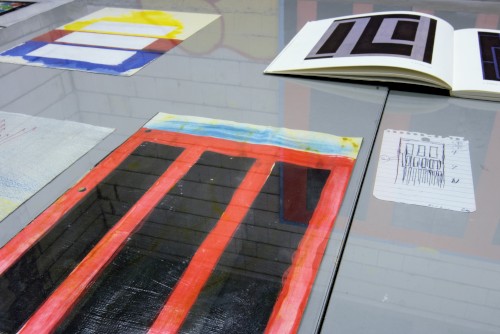

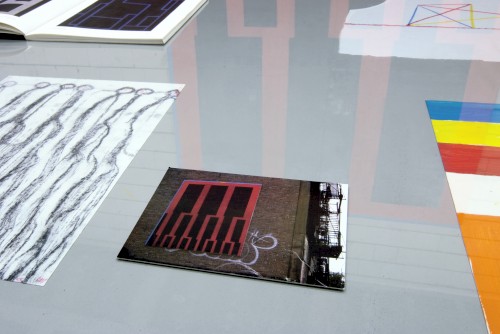

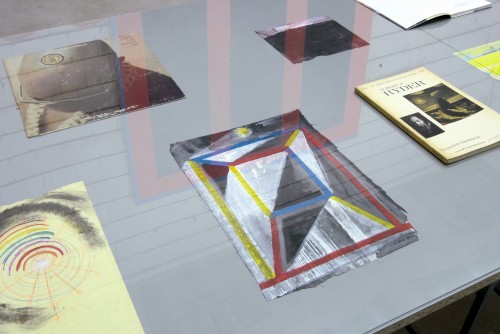

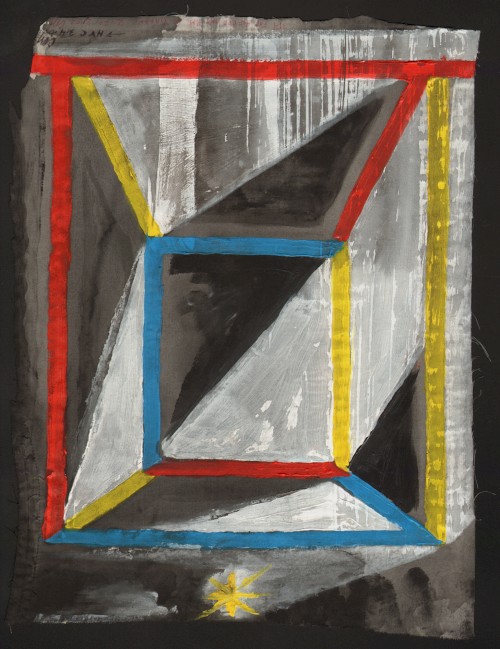

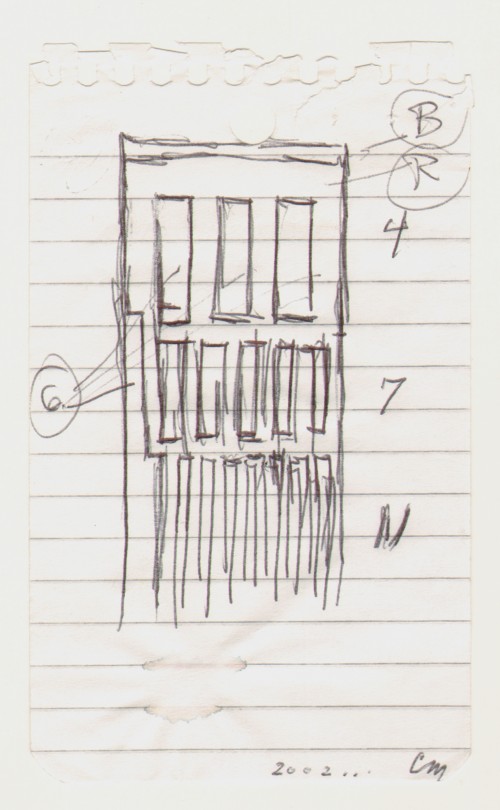
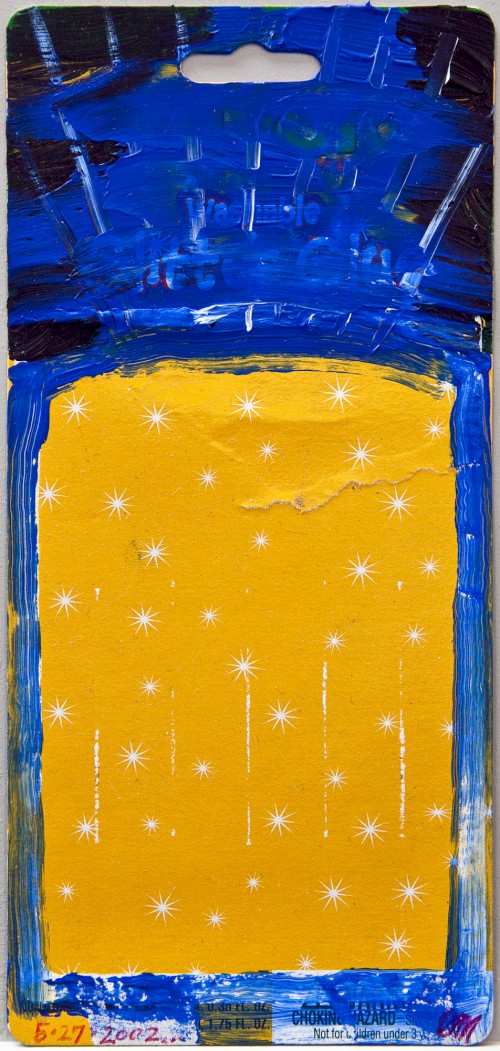

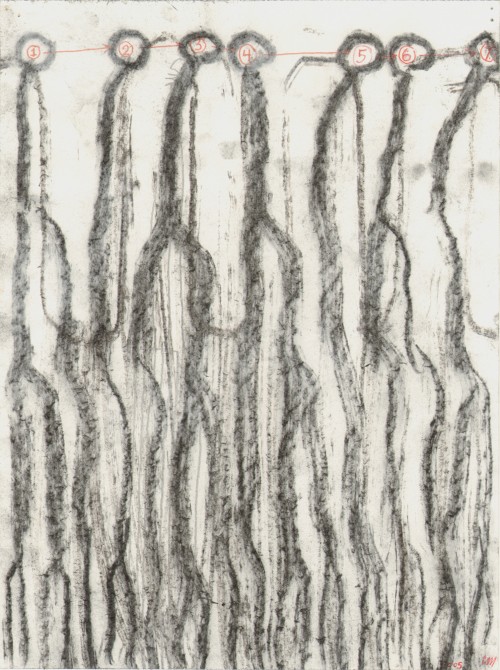
- Current
- Upcoming
- 2026
- 2025
- 2024
- 2023
- 2022
- 2021
- 2020
- 2019
- 2018
- 2017
- 2016
- 2015
- 2014
- 2013
- 2012
- 2011
- 2010
- 2009